Close

Describe the function of endocrine cells:
Presence of ducts:
How is specificity achieved:
The function of the endocrine system:
Describe the anatomical distribution of endocrine tissue:
Describe the constituents of the pituitary gland and list the hormones secreted:
Describe whether the hormones act on exocrine or endocrine glands:
Describe whether the hormones are trophic:
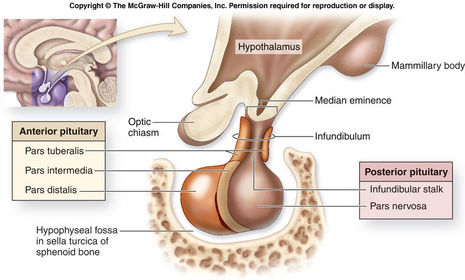
Describe the location of the pituitary gland:
Describe the embryological development of the pituitary gland:
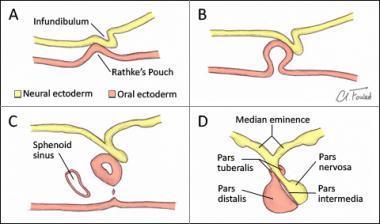
Describe the arrangement of cells and blood vessels in the anterior pituitary gland:
Describe the histological arrangement of cells in the anterior pituitary gland:
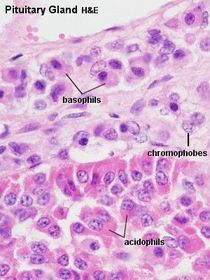
Describe the appearances of the cells of the anterior pituitary gland and reasons why on an H&E stained section:
Describe the strategy for delineating the cell types when an unfamiliar dye is used:
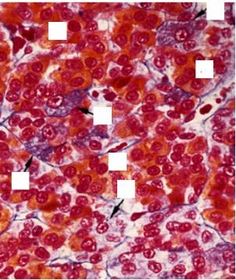
List the percentages of each cell type (somatotrophs etc):
Describe the usefulness of histological staining in pituitary adenomas:
Describe two other techniques that could be used to identify the cell types in the anterior pituitary gland:
Describe the idea of cell networks:
Describe the ultrastructural features of a peptide secreting cell:
Describe the histological appearance of the intermediate lobe:
Discuss the anatomy of the posterior pituitary gland:
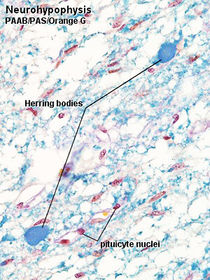
Discuss the reasons why an adenoma of the lactotrophs is more likely than any other cell type:

Describe the anatomy of the hypothalamus:
Define the bordering structures rostrally, caudally and dorsally:
Compare and contrast the magnocellular and parvicellular neurons.
Describe the median eminence location and layers:
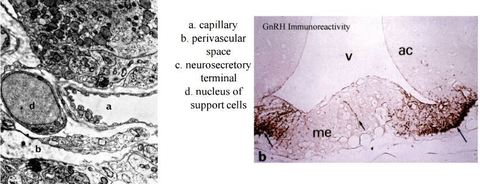
Describe the blood supply of the pituitary gland:
What significance does the blood supply of the anterior lobe have:
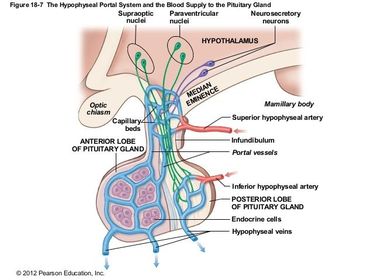

 Hide known cards
Hide known cards